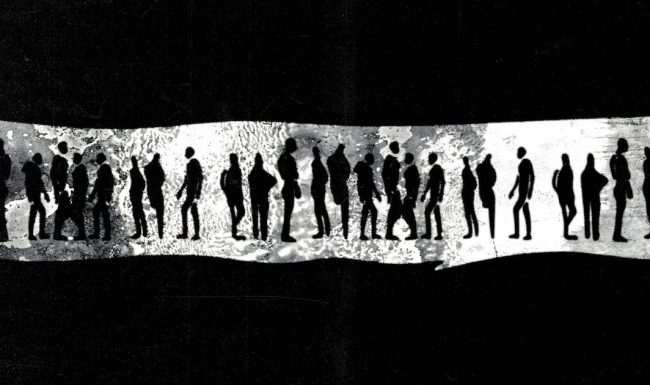Songs of guilt and redemption
The John Donne cycle includes intense, anguished and agonizing verses that align with the poetic impulse of the Renaissance poet, whereas the later verses derived from Blake are more refined, robust, and undoubtedly exploratory.
Songs of guilt and redemption
After Bartók’s “Cyanopogon” which was presented on the main stage of GNO, Themelis Glynatsis had the need to do something smaller, with fewer people. Such a perspective claims to have a freedom, allows more experimentation, suggests a condition for a possible interpretation of the specific works. “It was also an opportunity to reunite with beloved collaborators, to work for the first time with Dimitris Platanias and to work again with Christos Kechris and Sofia Tamvakopoulou. But the key premise was proximity, familiarity and small scale.” This was the route to the creation of the show ‘This is Britten’ in which he admits there is a mood of introducing Benjamin Britten. “Unfortunately, Benjamin Britten’s music is not widely known in Greece, which is unfair, as he is rightly considered one of the most important composers of the 20th century, with a large and diverse oeuvre and a decisive contribution to the development of opera in the 20th century. I definitely want to introduce Britten’s work to people who don’t know him, and I hope that this particular event will be an opportunity to get more involved with his work.” The project of Themelis Glynatsis is based on two emblematic song cycles by Benjamin Britten based on poems by William Blake and John Donne. How does Benjamin Britten’s creation converse with that of William Blake and John Donne? “Britten was preeminently a literary composer – most of his operas are based on well-known literary works, as are his song cycles. He was particularly selective in his literary preferences and extremely lucid in using literary works as raw material for his compositions. In addition to his ingenious use of the English (but not only) language in his songs and operas, Britten had a rare ability to define the vibration of the texts in his musical style. Thus, the John Donne cycle includes intense, anguished and agonizing verses that align with the poetic impulse of the Renaissance poet, whereas the later verses derived from Blake are more refined, robust, and undoubtedly exploratory.” At this point he explains that the combination of the two cycles not only offers an interesting perspective on the evolution of Britton’s style, but also brings to the fore themes that preoccupied the composer throughout his career, such as guilt, religion, punishment and atonement. These constitute the backbone of the show.

Themelis Glynatsis, Christos Kechris, Dimitris Platanias and Sofia Tamvakopoulou at rehearsal
The listener is transformed
Speaking about the current value of the works, Th. Glynatsis says that it is the same as it was when they were first presented: “The combination of a bold musical language with the fiery speech of the two poets so different from each other puts the listener in an almost difficult position: the feelings contradict, change, undo and reborn as others. In a sense, the listener is also transformed through this kaleidoscope of images, sounds, feelings and concepts.’ The videos he created together with Chrysoula Korovesi and Marios Gambierakis play an important role in this performance. “They are like my personal “visions”, which Marios and Chrysoula collected, reformulated, improved and evolved into a single, consistent and intense visual environment that steps on the architecture of the library and transforms it into many landscapes that react based on the music, voices, poetry”.
Source: www.tanea.gr
Info
Saturday 30 September, 21:00
National Library of Greece lobby (NLG)
Stavros Niarchos Foundation Cultural Center (SNFCC)
Free admission

